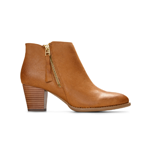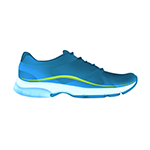
What Are Mary Jane Shoes? Uncovering Their Charm

Thanks to their ongoing renaissance in celebrity circles, Mary Jane flats are enduring icons of shoe design. They weren’t always regarded as the fashion-forward footwear they are today, however—nor were they always called Mary Janes.
The classic Mary Jane shoe style has had a long, complex backstory that’s taken them from a school uniform standard to shoe statement.
But, what are Mary Jane shoes and how have they changed over the years?
Buckle up—we’re exploring the look and history of traditional Mary Janes, examining how they’ve changed over the years, and tracing the cultural impact they’ve had on the world. Their bottoms may often be flat, but the story of Mary Janes is one of captivating twists and curves—so slip in and let’s get walking.
What Makes a Mary Jane?
Before we can dive into the history of Mary Janes, we have to pinpoint exactly what kind of design the name is referring to. Mary Janes are defined by a few key features:
- Straps – It’s not a Mary Jane shoe if there isn’t at least one strap securing it to the front of your ankle. Different models may have multiple, but the single strap design is most common for the style. Generally, Mary Jane straps are thin, functional, and meant to hold your shoe in place in the same way laces would for athletic footwear.
- Buckles – Straps aren’t very useful without something to attach them to. A Mary Jane’s buckles allow you to adjust your shoes to a relatively tight, secure fit around your foot. Buckles work as aesthetic features as well—more often than not, however, they’re small, sleek, and set to the side, rather than front and center.
- An open design – Mary Janes free the middle of your feet, allowing them to bend and breathe as they please. Basic Mary Janes essentially feature a toe cap, side walls, and cover for your heels. The center of this classic shoe is generally open-concept from the base of your toes to your ankle strap—though a few variations may not follow this exact formula.
- Flat bottoms – This has been changing in recent times as Mary Janes evolve to take on new forms. When you say Mary Janes, however, people often think back to the original style with a thin sole raising you up from below. Similar to ballet flats, Mary Janes are a flat shoe that pair perfectly with jeans, skirts, and a classic pair of trousers.
- Glossy material – Again, this isn’t always the case in contemporary times, but most designs stick true to form and use a shiny, slick material in their production. Soft leather is a classic choice, but similar-looking synthetics are also a popular option for modern models.
Aside from these common characteristics, Mary Janes vary in design by brand, model, and more. Likewise, over the course of their history, they’ve gone through a variety of changes while somehow still never letting go of their classic feel.
When and Where Did Mary Janes Originate?
Way back in the 15th and 16th centuries, well-off men adopted the habit of wearing low-cut shoes with a single strap across the front fastened in place with a buckle or button. King Henry VIII was amongst these fashionable chaps and several of his official portraits include the iconic style.
These shoes were never known as Mary Janes, but their design did lay the groundwork for the iconic footwear to take hold hundreds of years later. The first modern renditions of what we would now call Mary Janes were originally known as bar-shoes for the characteristic bar-like strap across their insteps. When this iconic style emerged at the turn of the 20th century, however, they weren’t regarded as girls’ shoes like they are today; instead, they were generally reserved for young schoolboys.
To understand how this shoe style became Mary Janes, we must first consider their place in history. During the early 1900s, there was a popular American comic strip called Buster Brown that, amongst a wide cast of characters, featured two bar-shoe sporting protagonists:
- The titular boy, Buster Brown
- His sweetheart, Mary Jane
When the 1904 World’s Fair rolled around, Buster Brown’s author Richard Outcault traveled to Saint Louis to license his characters out for advertising purposes. One business he struck a deal with was The Brown Shoe Company, which acquired rights to both the characters’ names and likenesses.
As bar-shoes were originally designed for boys, The Brown Shoe Company initially marketed them as Buster Browns. Soon enough, however, the style would become wildly popular with women—a social shift driven by celebrities of the time, including:
- Renowned child actor Shirley Temple
- Twiggy, a supermodel of the era
- Fashion icon Jane Birkin
After appearing on these famous feet, Buster Browns’ fate was sealed and The Brown Shoe Company soon switched their name to the modern standard: Mary Janes.
From that point onward, the Mary Jane shoe style has more or less remained a staple of feminine fashion. From Sex and the City to Clueless, they’re featured in a variety of pop culture staples both past and present—though not always in that same form The Brown Shoe Company designed over a century ago.
How Has the Mary Jane Changed Over the Years?
Mary Janes are widely known for their versatility and they’ve taken on a variety of shapes and styles over the years. The 1920s and 30s saw the first advancement in Mary Jane style when the original patent black exterior was replaced with a variety of different designs, including:
- A range of colors
- Zebra stripes
- Polka dots
During the Grunge era of the 90s, their thin, sleek style was swapped out for a chunkier, raised aesthetic that matched the torn denim and plaid flannel of the time. Back was the original black and the buckles, straps, and other features all became more apparent and pronounced.
Nowadays, Mary Janes are available in countless different varieties to match anyone’s style. What’s hot, however, is the ultra-feminine, babydoll aesthetic with adornments like:
- Lockets
- Ribbons
- Lace
- Frills
- Bows
Mary Janes have always adapted to the time and place where they’re worn—and that’s why they’ve maintained their enduring cultural significance more than a century after their creation.
The Cultural Significance of the Mary Jane
Aside from 90s sensations like Sex and the City and Clueless, Mary Janes have long found their way into mass media, art, and the hearts of fashion-forward women across the globe. They’re the footwear of choice for Alice’s adventure in one of the most-watched animated movies of all time. Alice in Wonderland, for instance.
It’s not just on the screen where this classic shoe has made an impact, however. From flappers to pin-up models, it’s nearly impossible to envision women of bygone eras without a pair of Mary Janes strapped firmly to their feet.
That doesn’t mean the Mary Jane’s heyday is over, however, as the style still enjoys regular wear in a variety of subcultures, including:
- Punk
- Psychobilly
- Goth
- The Lolita underground fashion movement (a Japanese aesthetic style that borrows heavily from Victorian England)
Mary Janes aren’t only prevalent in alternative styles, however, but have made a resurgence as an everyday shoe for all kinds of aesthetics and outfits. Don’t know how to wear Mary Janes? The answer is simple! These stylish shoes can be paired with anything from jeans, to skirts, to even sundresses, making them a versatile shoe style for any occasion. Copenhagen Fashion Week 2023 was positively loaded with Mary Janes and, recently, they’ve been spotted on a variety of mainstream celebrities like:
- Olivia Rodrigo
- Alexa Chung
- Gigi Hadid
- Ayo Edibiri
- Carly Rae Jepsen
- Jennifer Lawrence
- Kaia Gerber
- Dua Lipa
- Katie Holmes
- Rita Ora
With such fashionable stars rocking the shoe style, Mary Janes are as iconic today as they were at the turn of the 20th century. That begs the question, however: What do modern Mary Janes look like?
Modern Versions of the Mary Jane
Contemporary Mary Janes break the mold from the classic shoe look—often retaining only the strap and open concept of the original design while adding modern flair and features. A few current styles that are making waves in the Mary Jane community include:
- Elevated flats – The classic design of Mary Janes allows for ample airflow and wiggle room for your feet, but certainly leaves much to be desired in terms of comfort. Modern, improved designs such as the Alameda Mary Jane Flat are not only elevated in the sense of having a thicker bottom, but likewise technically advanced with superlative arch support, adjustable soles, and biomechanically designed footbeds for maximum comfort.
- Sportier styles – Mary Janes were historically for dressy occasions and completed a formal outfit such as a school uniform or suit. Nowadays, however, they’re mainstays of everyday wear and their sporty style reflects this ongoing evolution. The Uptown Mary Jane Flat features a hook and loop strap to secure your feet in extra tightly. Additionally, its soft, shock-absorbing sole lies atop thick, secure treads that prevent slippage while still maintaining that slip-in feel.
- Heels – Elevation wasn’t originally in the cards for Mary Janes, but modern designers have certainly taken the shoe to new heights. Celebrity stylists and fashionistas the world over are racing to attach heels to classic and modern Mary Jane styles. Even the Princess of Wales herself, Kate Middleton, was recently spotted sporting a stiletto-heeled version of the classic slip-on.
Modern Mary Janes are diverse, comfortable, and fitting for any occasion. You won’t find your perfect pair walking down just any street, however—for that, you’ll have to head to Vionic.
Charming, Classy Mary Janes Live at Vionic
Mary Janes are an enduring style of footwear and amongst the most iconic shoe designs of our modern era. They’re essential for strolls in the park, long workdays on your feet, or whatever else life throws at you.
Vionic offers a wide variety of women’s flats and loafers—including sleek, modern Mary Janes—that embody comfort and style. Every pair features Vio Motion Technology, the kind of incredible arch support you wouldn’t initially imagine in a flat—but that’s just how Vionic makes our shoes. They can relieve foot pain, support uninhibited movement, and complete any outfit, and they’re in a league of their own in terms of support and style.
Shop Vionic today and keep the legacy of Mary Janes going on your own two feet.
Sources:
Satra. Who actually was Mary Jane?. https://www.satra.com/.
Vogue. Celebrities Are Wearing Your Favorite Shoe From Kindergarten. https://www.vogue.com/.
Ohio State University. The History and Resurgence of Mary Jane Shoes. https://org.osu.edu/.
The Mustang. The Rise of Mary Janes. https://www.sdamustang.com/.









